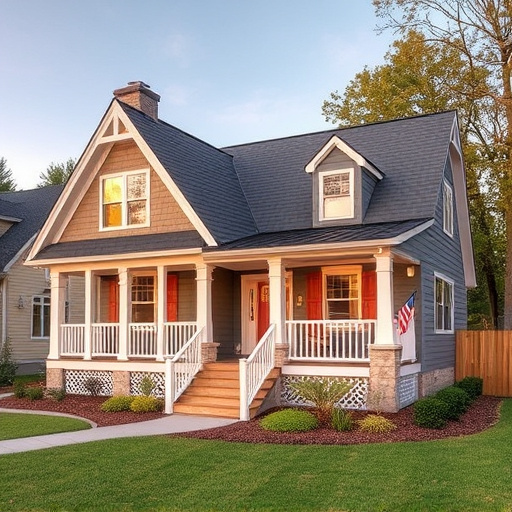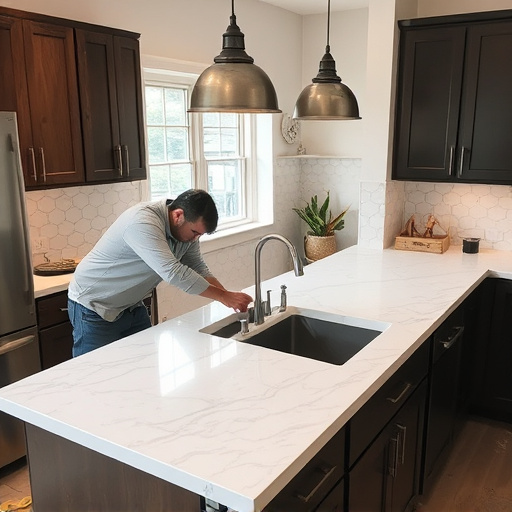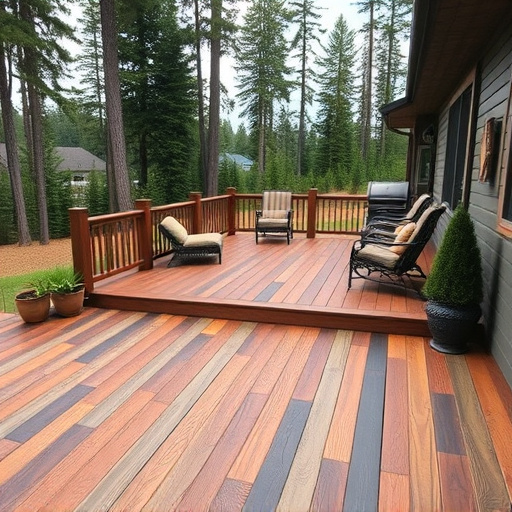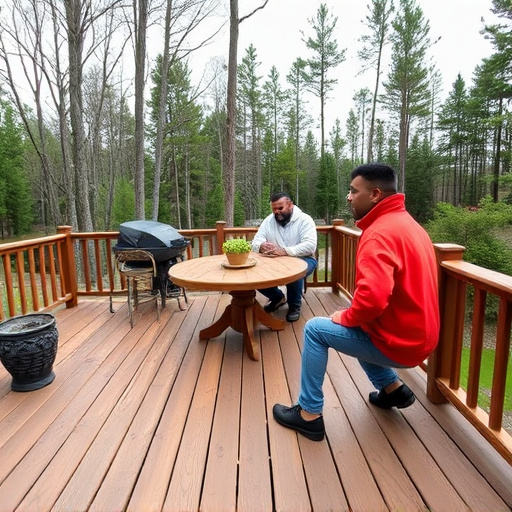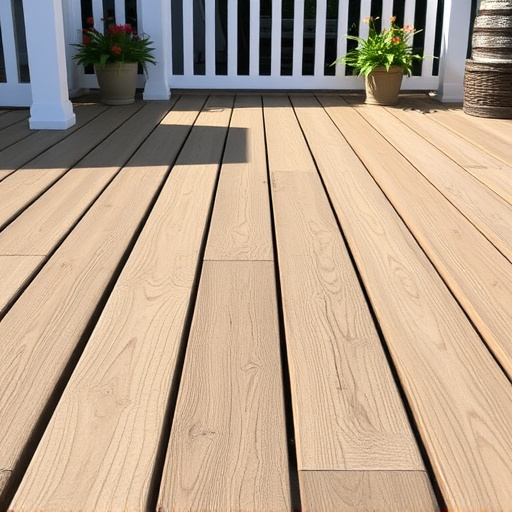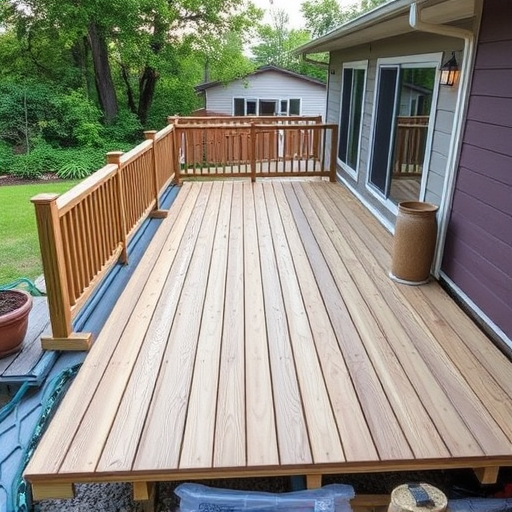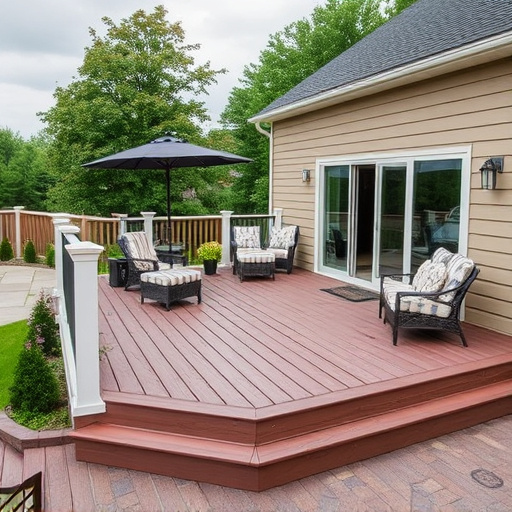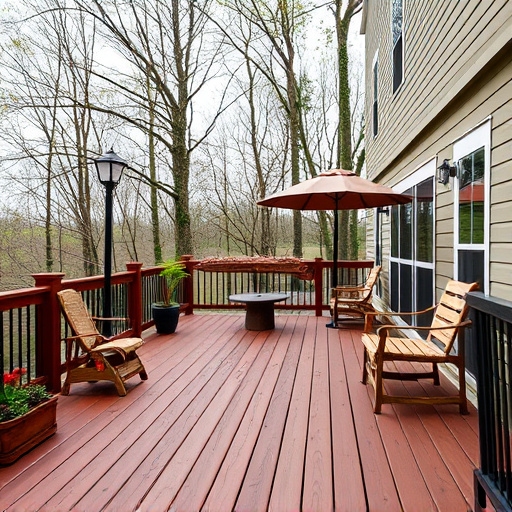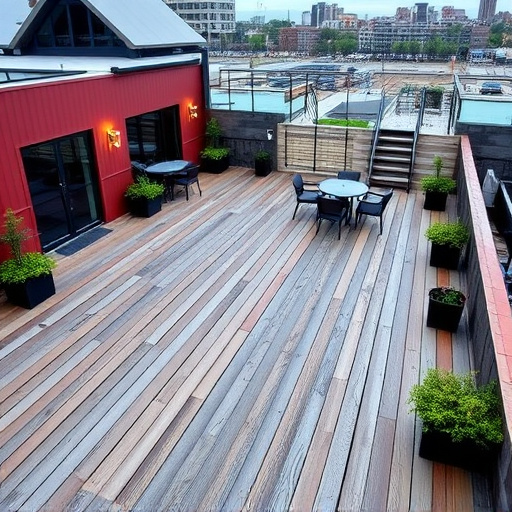Choosing the right decking material is key for safety, functionality, and longevity, considering climate, lifestyle, and intended use. Homeowners should opt for slip-resistant composite options in inclement weather and low-maintenance materials for families with kids and pets. For commercial installations, professional installers ensure structural integrity, aesthetics, and longevity. Researching durability, weather resistance, and UV protection minimizes long-term replacement needs. Avoid common pitfalls like improper slip-resistant surfaces and lack of adaptability to future trends, ensuring seamless integration with home's exterior features for a cohesive design that complements new and existing elements.
Deck building is an exciting project that can transform your outdoor space, but it’s not without its pitfalls. In this article, we’ll explore three common mistakes deck builders often make and provide essential guidance to ensure a robust and safe structure. From selecting durable materials and designs to prioritizing safety features like slip-resistant decking, and mastering efficient installation processes, these insights will help you create a deck that’s both functional and long-lasting, ensuring code compliance and structural integrity.
- Choosing the Wrong Deck Material and Design
- – Understanding material options and their longevity
- – Discussing popular design trends and their potential pitfalls
Choosing the Wrong Deck Material and Design
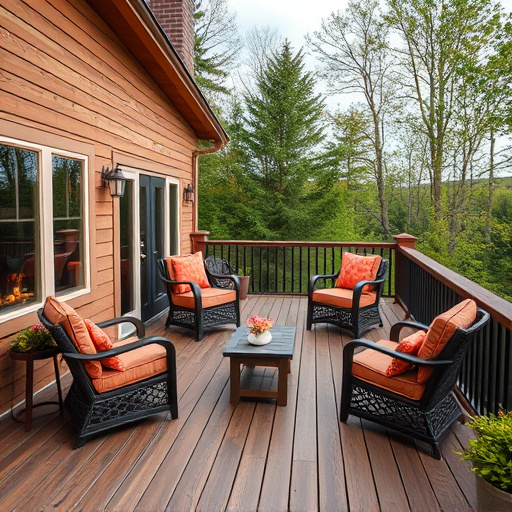
Choosing the right deck material and design is a fundamental step in any deck building project, as it significantly impacts both functionality and longevity. One of the most common mistakes homeowners make is selecting a decking material that doesn’t suit their climate or lifestyle. For example, using slippery materials on sloped decks can lead to serious safety hazards. Slip-resistant decking options, like those with textured surfaces or made from composite materials, are ideal for areas prone to rain or snow. This ensures better traction and reduces the risk of accidents.
Additionally, the design should consider how the deck will be used. If it’s a family space with kids and pets, opt for durable, low-maintenance options like treated wood or composite decking. Avoid materials that are difficult to clean or prone to rot. For commercial or residential roofing and siding projects, professional installers can provide valuable insights into the best materials based on structural integrity, aesthetics, and long-term performance. This ensures not only a safe but also an attractive and functional deck.
– Understanding material options and their longevity
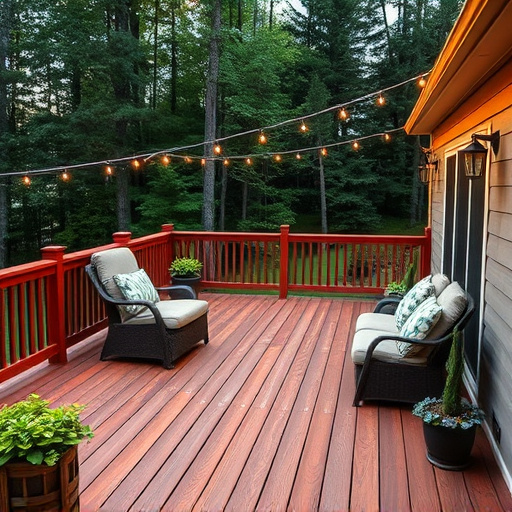
When planning a deck build or renovation, one of the most common mistakes homeowners make is not thoroughly understanding their material options and their longevity. Decking materials come in various types, each with distinct advantages and lifespans. For outdoor spaces that are frequently used, especially those with high foot traffic, choosing slip-resistant decking can significantly enhance safety. This feature is crucial for preventing accidents, particularly when wet or icy conditions exist.
Moreover, while considering options like traditional wood, composite materials, or vinyl, it’s essential to look beyond aesthetics and initial costs. Commercial siding installations or repairs might be a consideration if your project involves large-scale decking or a complete overhaul. Materials that offer superior durability, such as certain types of composite decking, can provide long-term cost savings by reducing the need for frequent replacements. Additionally, understanding weather resistance and UV protection will ensure your deck remains in top condition over time, minimizing the risk of damage from extreme weather events or prolonged sun exposure.
– Discussing popular design trends and their potential pitfalls
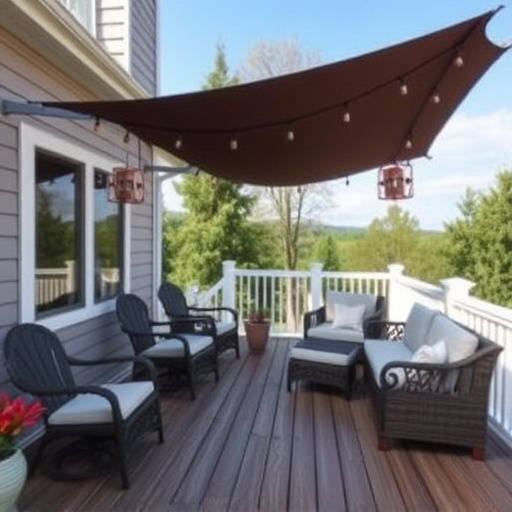
When embarking on a deck building project, one must steer clear of certain design blunders that could compromise functionality and aesthetics. Popular trends like incorporating slip-resistant decking surfaces are crucial for safety, but poorly executed designs can lead to unsightly gaps or uneven textures that defeat their purpose. Additionally, relying heavily on trending materials might result in a deck that lacks adaptability to changing fashion and functional needs over time.
Another common mistake is neglecting the seamless integration of the deck with exterior home improvements. As residential siding undergoes replacement or renovation, it’s essential to consider the overall aesthetic harmony between these elements. A discordant mix of textures, colours, and styles can create a confusing visual labyrinth, detracting from the beauty of both the deck and the surrounding home. Prioritizing a cohesive design approach that complements both new and existing exterior features will ensure a more pleasing and enduring result.
When embarking on a deck-building project, avoiding common mistakes is key to achieving a durable and aesthetically pleasing space. By understanding material choices and their impact on longevity, as well as being mindful of design trends, you can steer clear of potential pitfalls. Remember, selecting the right materials, such as slip-resistant decking options, will not only enhance safety but also contribute to the overall success and longevity of your deck.
